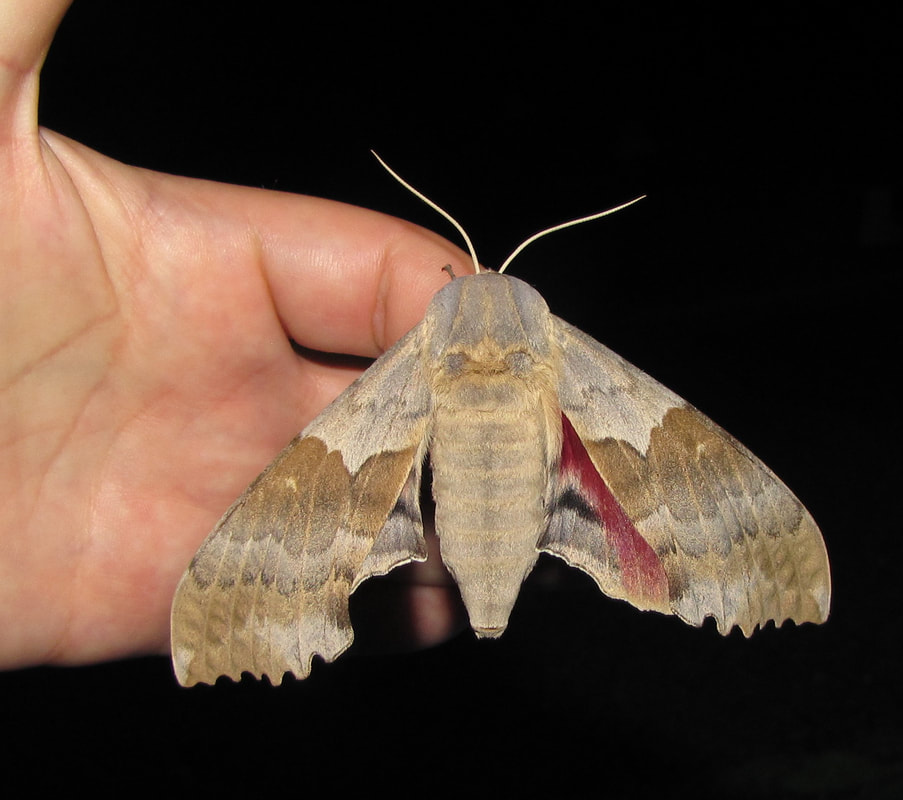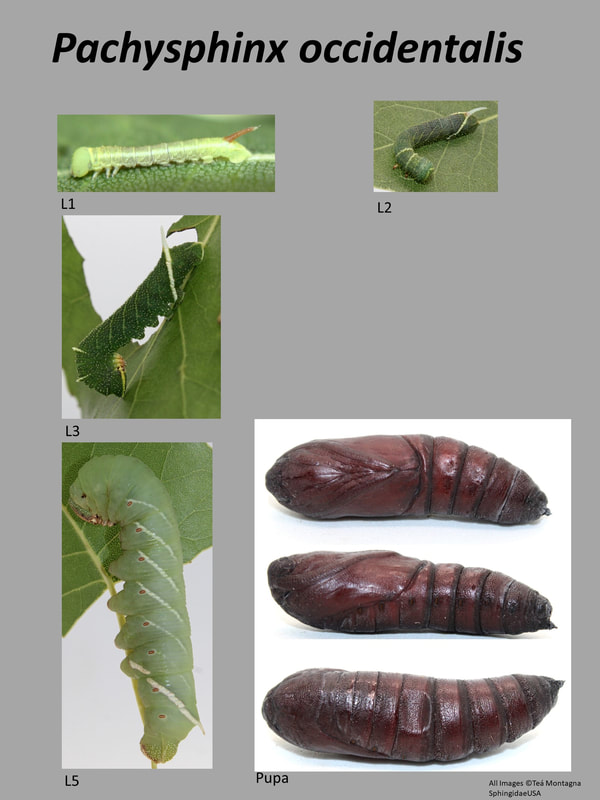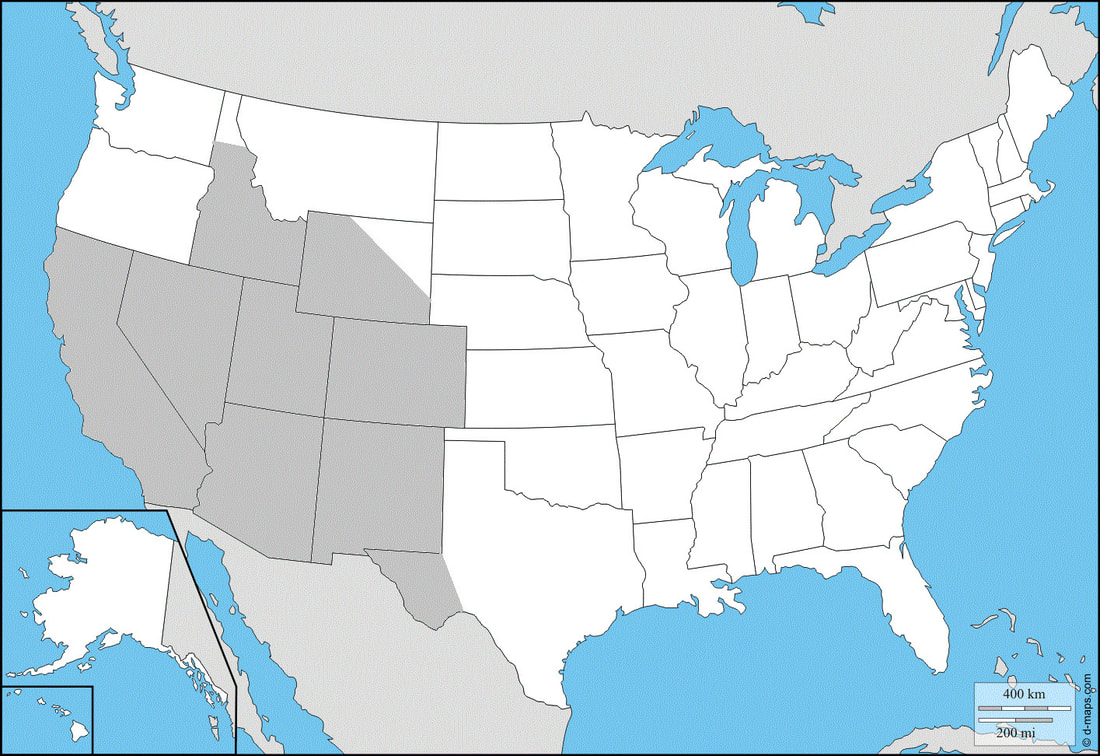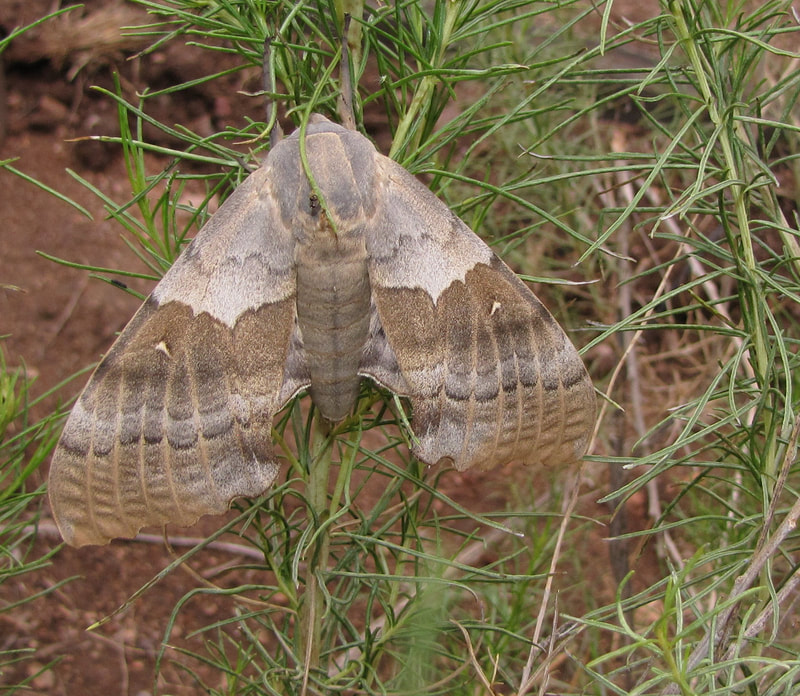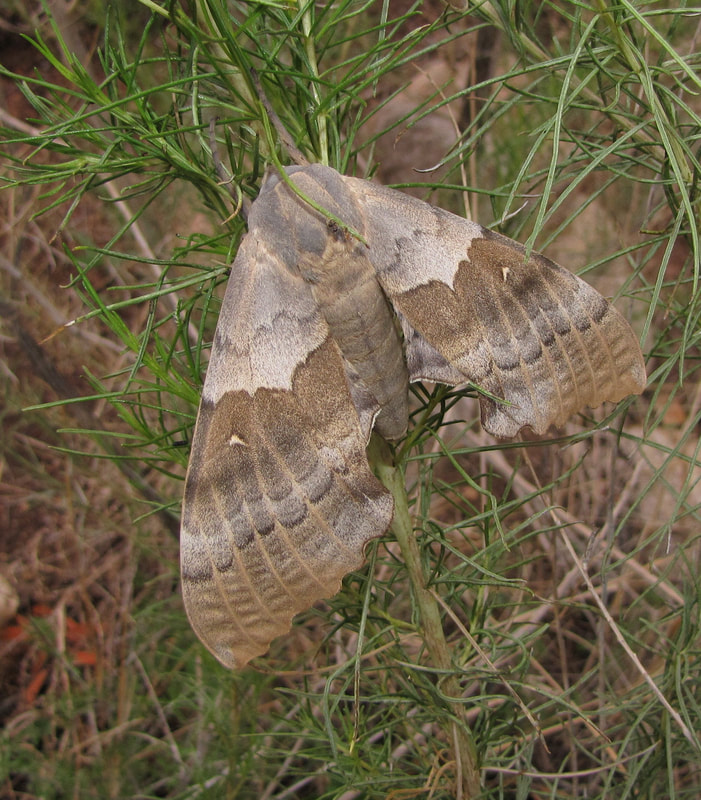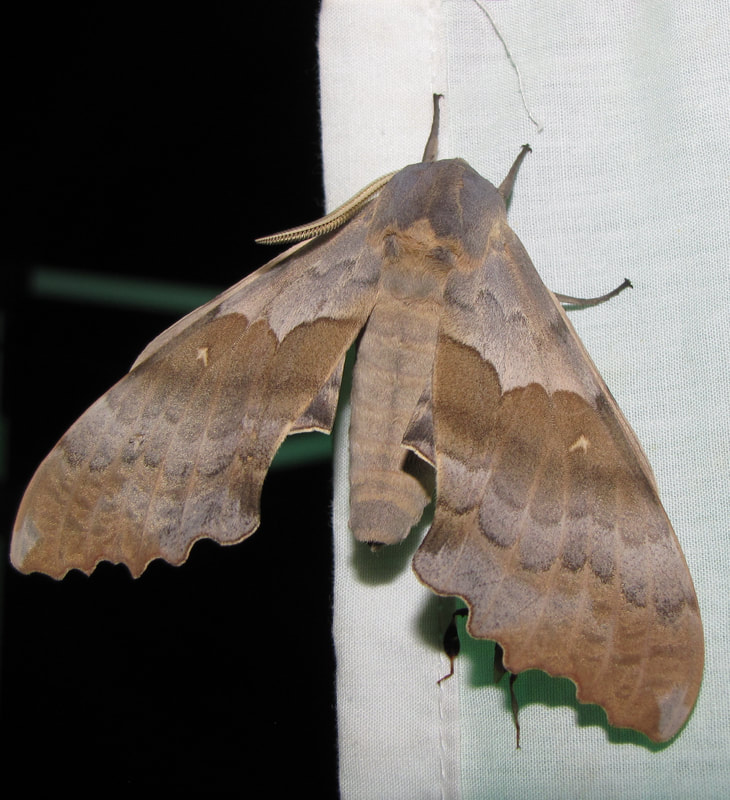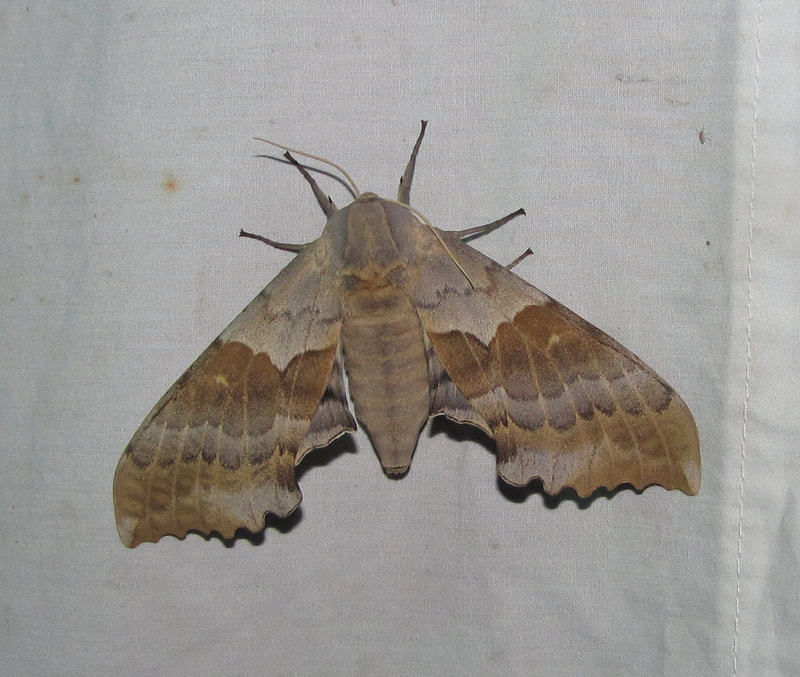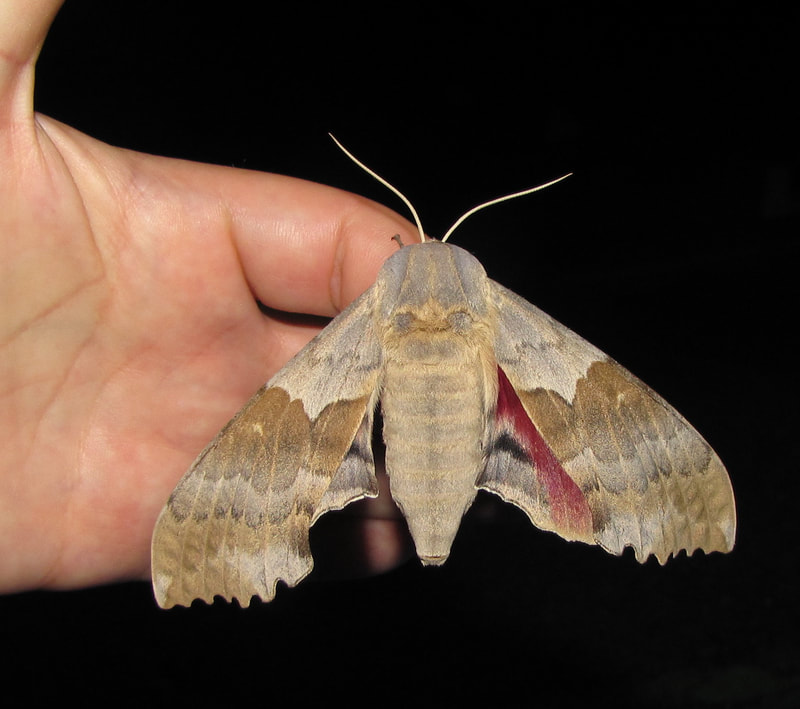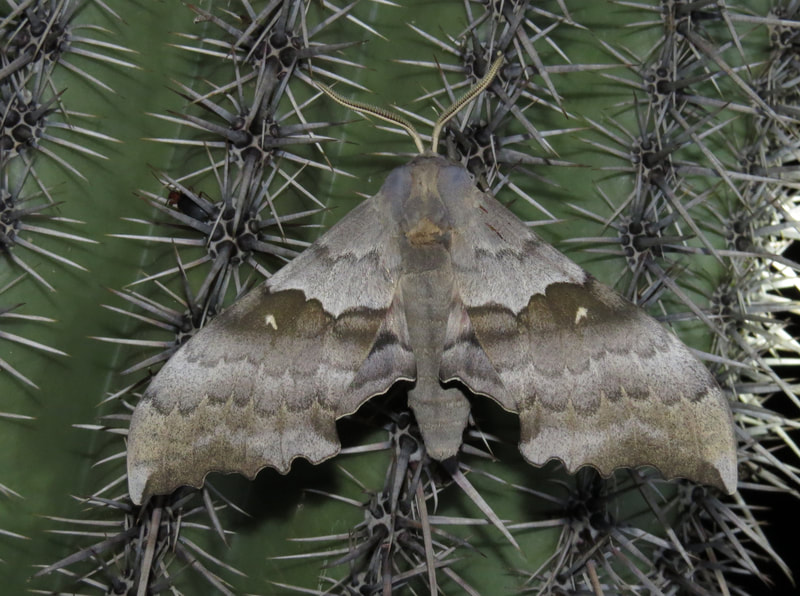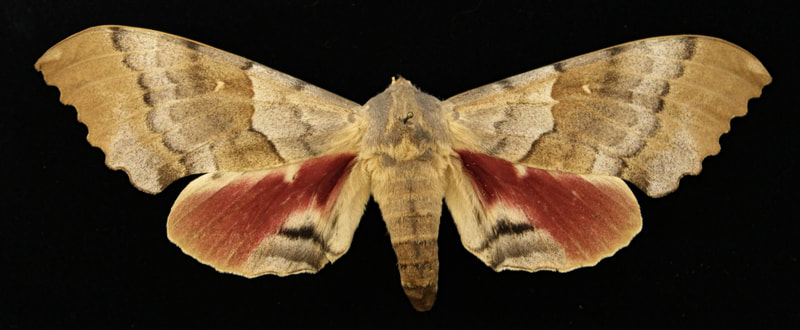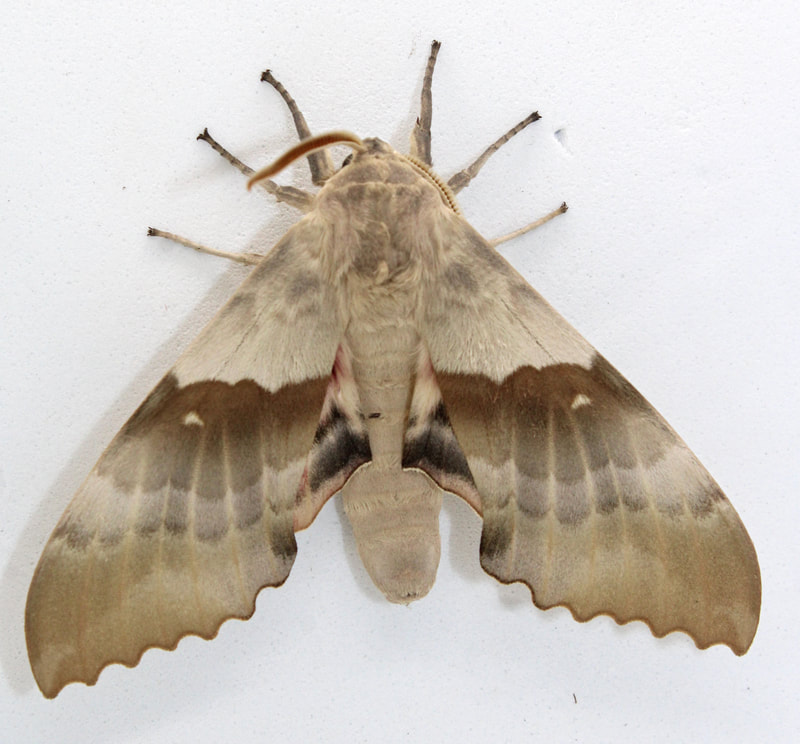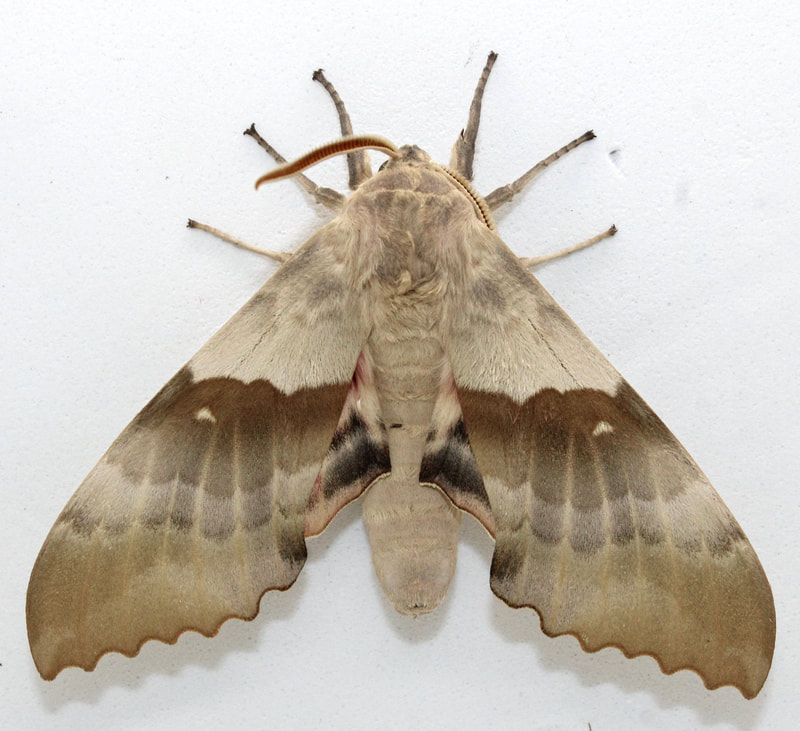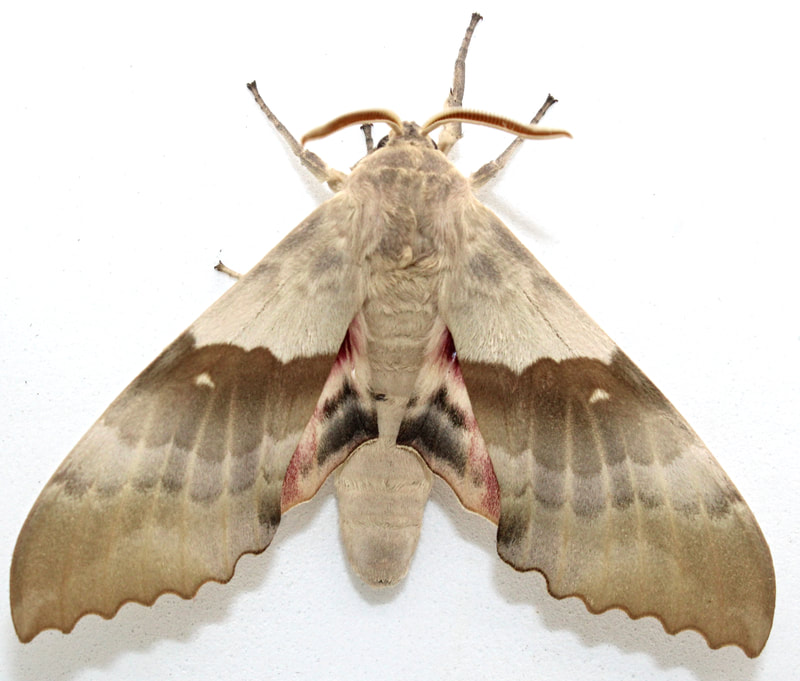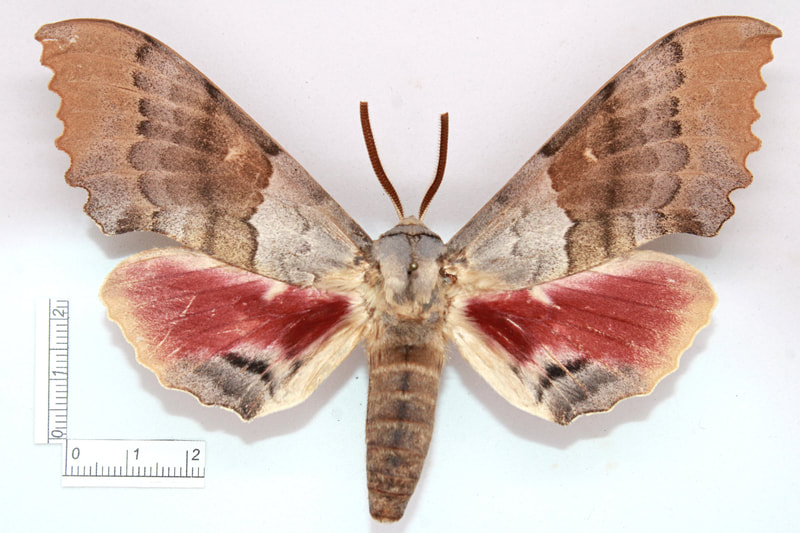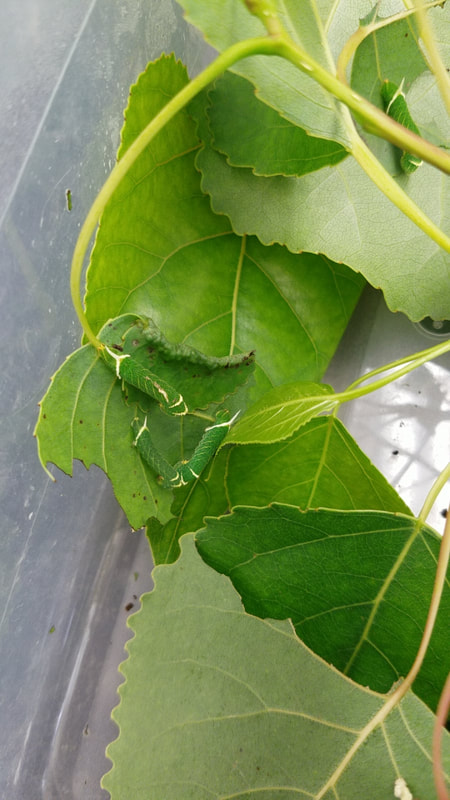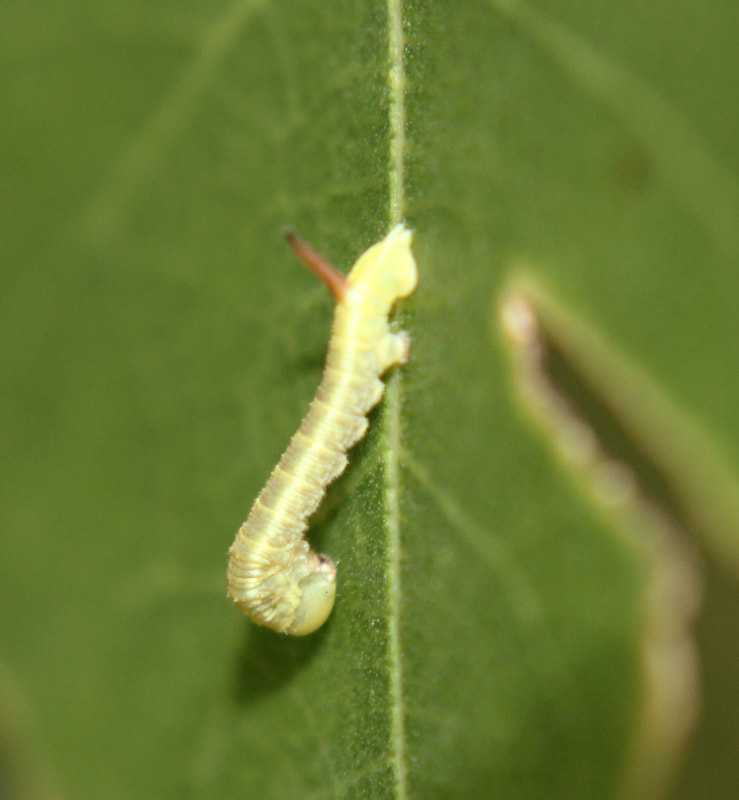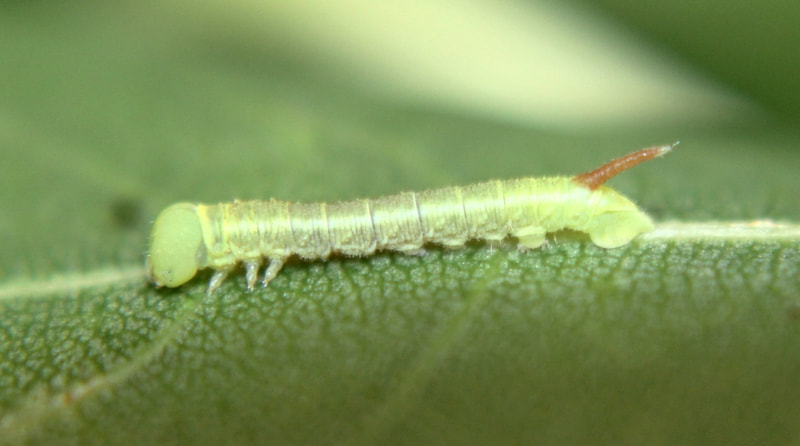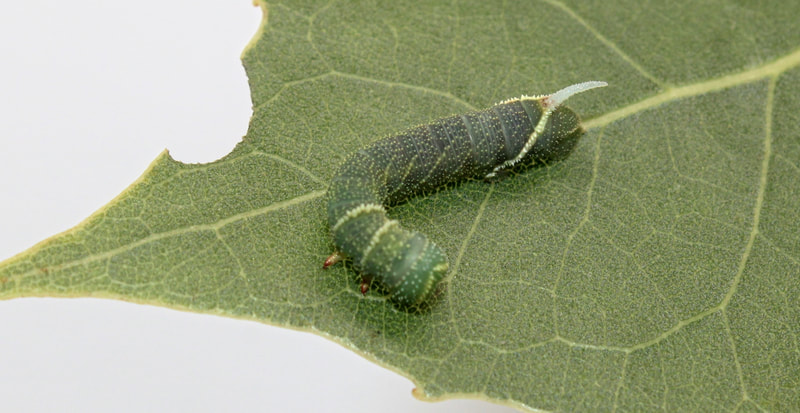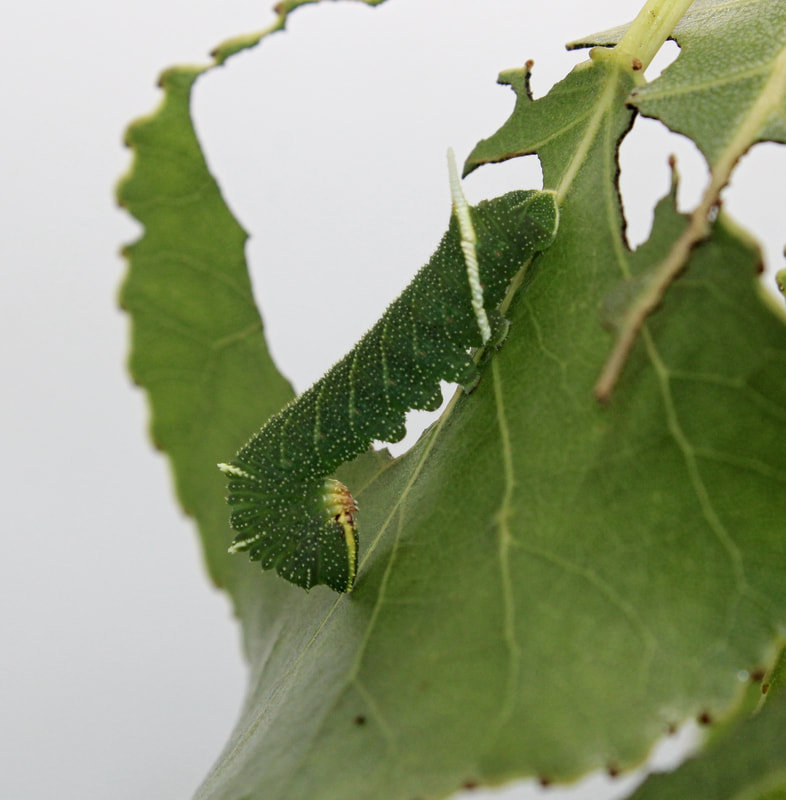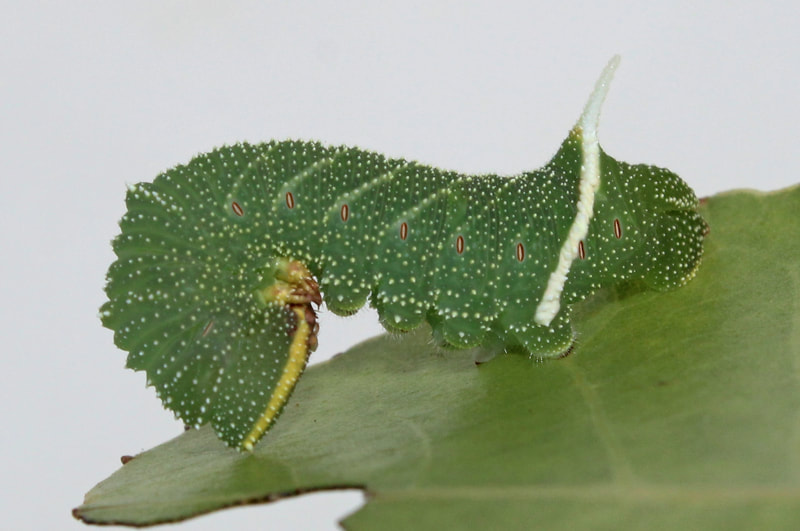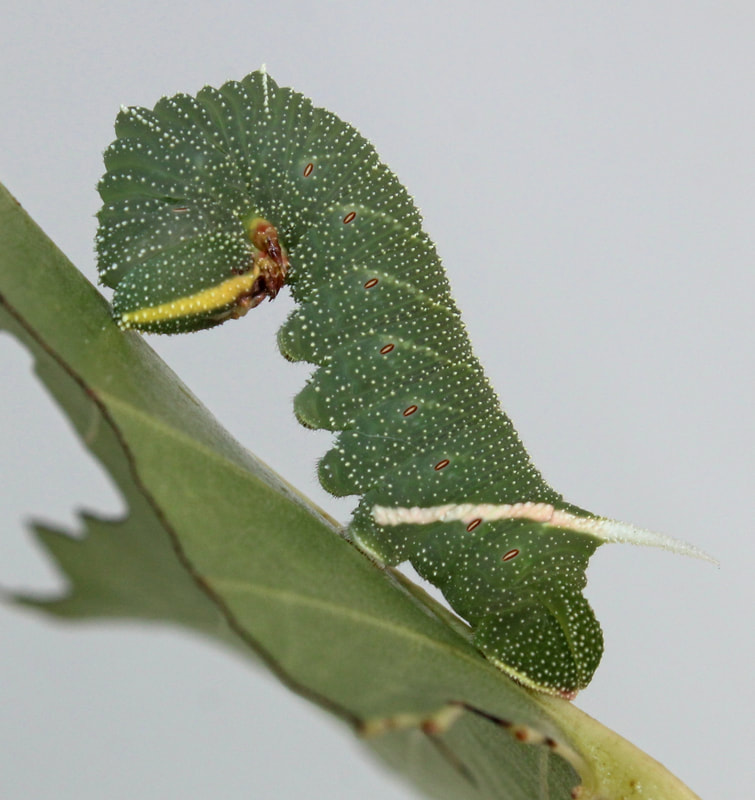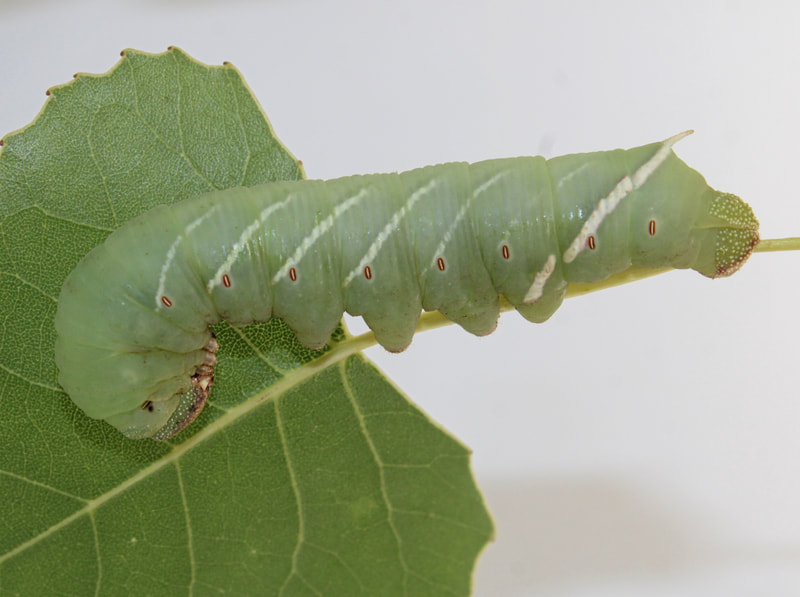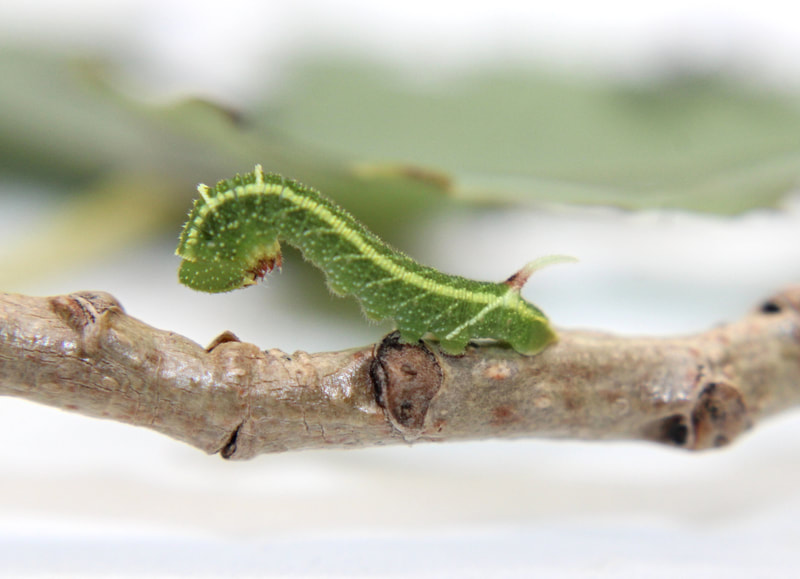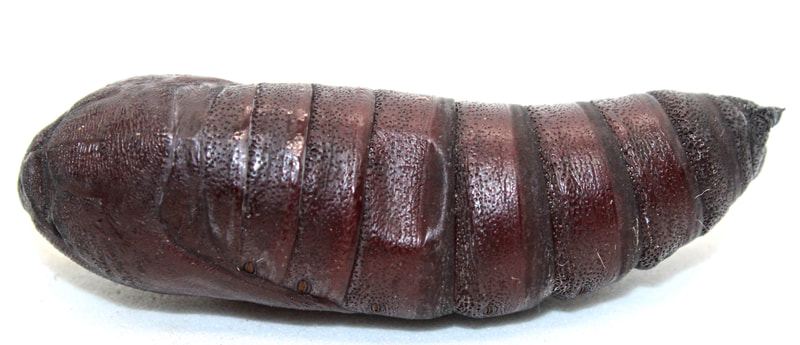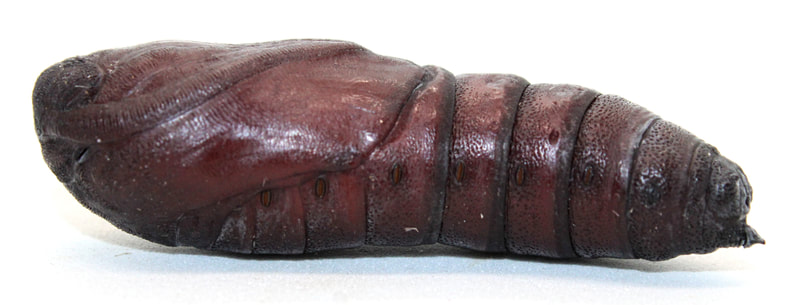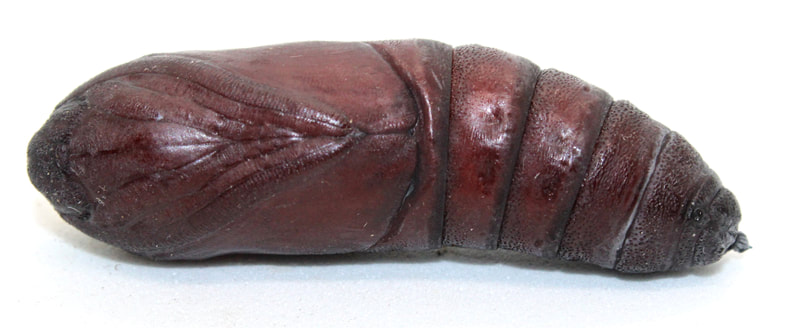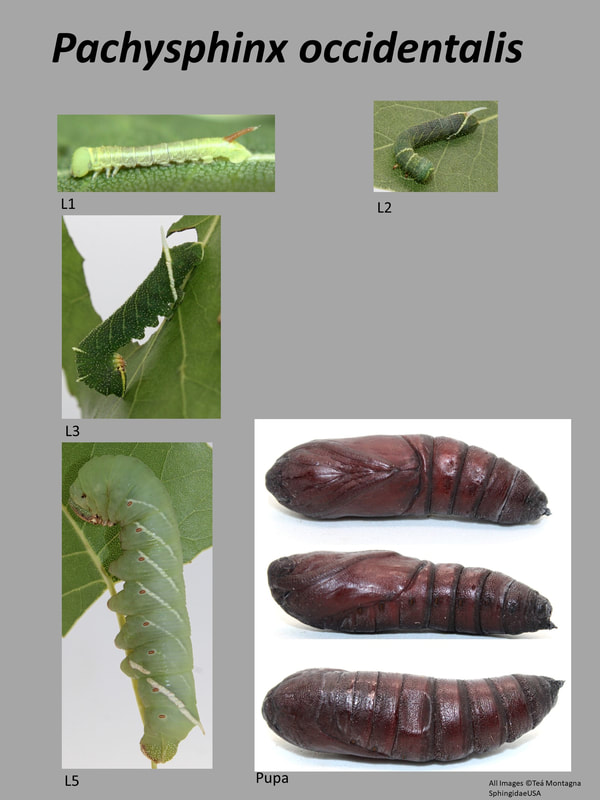|
Common Name: Western Poplar Sphinx
Ecology and Life History: This moth is found from May through October through most of its range. In Arizona, it is associated with the July/August monsoon season. It is heavily attracted to light, with both sexes being attracted. Males seem to fly more readily to light. Males tend to be slightly smaller than females, but not excessively so. Eggs are laid in small clusters on either surface of a leaf (2). Larvae are solitary feeders, despite the egg laying habits of the adults. Habitat and Searching for Larvae: Larvae are most easily encountered on Cottonwood (Populus fremontii) or Aspens (Populus spp.). Tuttle notes that searching streambeds for frass often reveals the location of larvae in adjacent Populus (2). This species likely has larvae that fluoresce under ultraviolet light. Rearing Notes: Eggs are readily deposited in paper bags with no addition of hostplant needed. Reports of this species on Salix may be accurate, but most larvae refuse this plant in captivity (2). Larvae take well to being sleeved, and as such are easy to rear using that method (2). Pupation occurs fairly deep underground (2). Adult Description: This is a large moth, forewings are between 51-71mm in length (2). The large scalloped forewings are light yellow-gray and brown with a white reniform spot. In the similar Pachysphinx modesta, the forewings tend to be a grayer color, and overall darker. The hindwings of this species are red with a blue marking in the anal angle. The blue marking is not very well defined and quite light. It appears bisected by two black lines. In Pachysphinx modesta, the anal angle is much darker blue and has a distinctive triangular black shape on the top rather than the bisected appearance of P. occidentalis. Larval Description: This is a large green larva with 7 white diagonal stripes on the side. The stripes are just slightly above the red spiracles and the last stripe is thicker and leads to the white horn. The head capsule of this species is green with a thick white border. The similar in appearance Pachysphinx modesta is more blue-green and has a significantly shorter caudal horn. Pachysphinx modesta larvae are also stippled with white setae whereas P. occidentalis lacks these (2). Click here to load this Caspio Cloud Database
Cloud Database by Caspio |
The gallery to the left contains photos of Pachysphinx occidentalis adults. If you have a photo that you would like to submit to us, please contact us.
The gallery to the right contains photos of Pachysphinx occidentalis larval and pupal stages. If you have a photo that you would like to submit to us, please contact us.
The gallery to the right contains photos of Pachysphinx occidentalis larval and pupal stages. If you have a photo that you would like to submit to us, please contact us.
